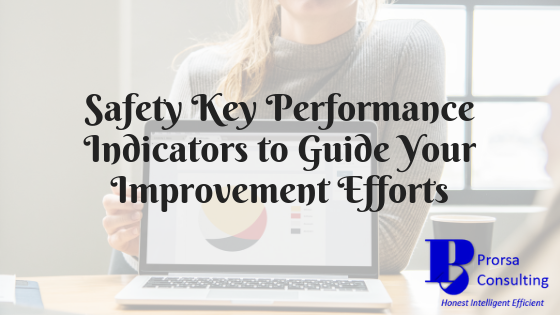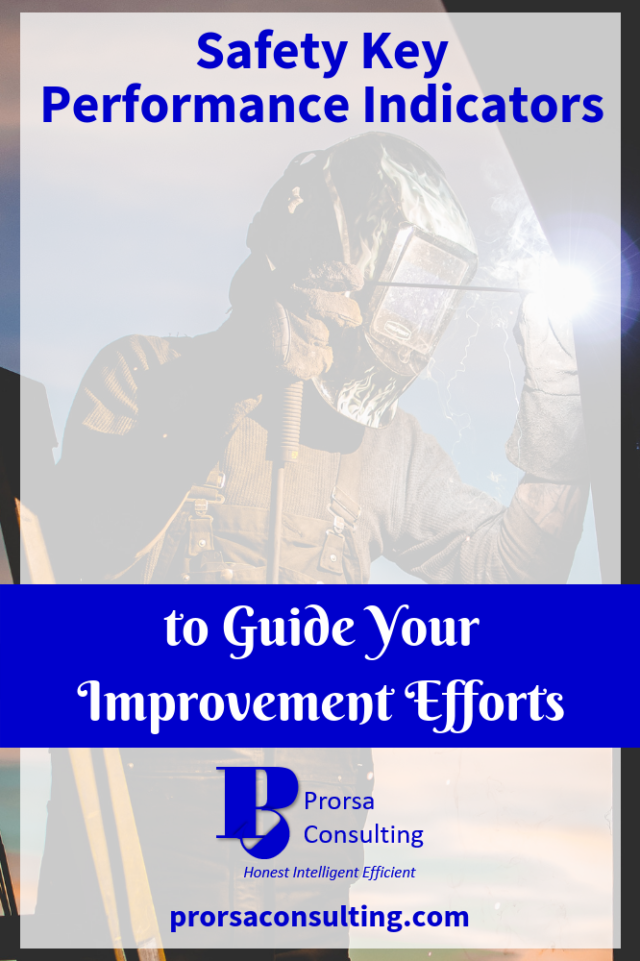Safety Key Performance Indicators to Guide Your Improvement Efforts
By : Admin -

A safety key performance indicator fulfills a wonderful purpose. It gives a snapshot of the current situation while hopefully pointing the way to a desired final destination. However, organizations must track and analyze the correct metrics to receive actionable information that will guide impactful decisions for safety management.
Unfortunately, businesses often spend far too much time looking at just the safety snapshot, i.e. injury/illness rates, days lost/restricted, fatality rates, etc. It’s no wonder, as this is usually the information emphasized by the Occupational Safety and Health Administration (OSHA) and the Mine Safety and Health Administration (MSHA).
Nevertheless, with focused eyes only on the snapshot, organizations miss opportunities to analyze other safety statistics. Arguably, these under-analyzed metrics may point the way to necessary safety management improvements. Continue reading as we explore five underutilized safety key performance indicators and the benefits their evaluations can bring to your EHS program.
Disclaimer: Please be aware that this blog post may contain affiliate links and any purchases made through such links will result in a small commission for Prorsa Consulting (at no extra cost for you). Feel free to visit our Disclosure of Material Connection page for more information.
Safety Key Performance Indicator 1: Incident Count by Cause
Do you know what factor causes the most incidents at your facility? If not, you definitely should if you want to improve your safety management.
Looking at incident counts by cause allows identification of your top incident causes. Furthermore, this identification makes it much easier to develop corrective and preventative actions to eliminate or mitigate the causal factors.
A focus on addressing incident causes can only positively impact your EHS performance because you are stopping incidents before they occur.
Moreover, knowing your more frequently-occurring incident causes provides you with data to holistically tackle the situations versus working incident by incident. For example, process or equipment changes eliminating work exposure to a causal factor may provide a universal approach to eliminating the risk.
Another holistic solution example may include a special initiative within your EHS program. Such an initiative may focus specifically on the chosen incident cause like a distracted driving awareness campaign.
Safety Key Performance Indicator 2: Incident Count by Injury Type
Which one of these injuries did your facility experience most last year: sprains/strains or lacerations? Can you truly address your worker’s training and awareness needs if you don’t know the injuries carrying the most potential exposure risk? It’s hard to believe you would be able to do so without a proper safety key performance indicator.
The guidance surrounding how to prevent or protect from an injury differs from injury type to injury type. Thus, how can you target your training and awareness messages if you don’t know how your employees get hurting during their work activities?
Additionally, a larger injury type count may point to the need for additional or different personal protective equipment (PPE) or procedures.
For example, large numbers of lacerations from hand cutting tools may indicate a change in gloves is needed. Alternatively, the same example may signify more frequent sharpening of tools (i.e. a procedure change) would be helpful.
Photo by rawpixel on Unsplash.com.
Safety Key Performance Indicator 3: Citation Counts per Work Area or Regulation Violated
Most facilities know the number of citations issued at their last inspection and their year-to-date citation count. Nonetheless, an overall citation count only tells you how many times you were found out of compliance during a discrete time period.
With just an overall number, where do you start to make changes in order to reduce the number of citations? In short, you wouldn’t know where to start based on just this metric.
However, delving a little further into your citation information for a safety key performance indicator may help to determine work areas and safety management program elements in need of extra attention.
A citation count assigned to each work area of the site will give an indication of parts of the facility where additional employee training or maintenance would be of some benefit. Citation counts could per regulation violated may provide guidance on program elements in need of adjustment to prevent further enforcement action.
Safety Key Performance Indicator 4: Number of Near Misses Reported
Everyone counts injuries because it is required. So, is near miss reporting as a safety key performance indicator really necessary. Yes, it is!
The National Safety Council states, “A faulty process or management system invariably is the root cause for the increased risk that leads to the near miss and should be the focus of improvement”. Likewise, you cannot focus improvement efforts if you don’t know the who, when, where, how, and why near misses occur.
In addition, evaluation and correction of near misses should be part of overall injury prevention efforts. Near misses occur at much higher rates than injuries in a typical occupational setting. When near misses go unaddressed, valuable chances go untaken to prevent the next severe injury before it occurs.
Safety Key Performance Indicator 5: Incident Count by Length of Job Position Service
How do you gauge the success of your ongoing worker engagement efforts? As EHS professionals, we know worker engagement in safety serves as the best line of defense for avoiding injury. However, you won’t know if the need exists for improvements to your engagement strategy without appropriate indicators.
Analyzing incident counts by length of job service for involved employees can provide a safety key performance indicator. High incident counts among mid- to long-term employees may indicate apathy toward safety for these groups. With this information, you can better structure your efforts to longer-serving employees for better worker engagement from these groups.
High incident counts across all levels of service may point to the need for more frequent worker engagement opportunities. EHS Today cites 2 studies which found “disengaged workers have 37 percent higher absenteeism, 49 percent more accidents, and 60 percent more errors and defects.”
In both these instances, the data would indicate necessary changes in the worker engagement approach. These changes should provide the spark needed to refocus employee attention on the facility’s safety management.
Additional Related Safety Management Content for You
Safety Incident Reporting for Those Who Don’t Fear Impressive Investigations
Final Thoughts
The less utilized safety key performance indicators discussed in the post can help organizations pinpoint issues that may have gone unnoticed using the more conventional metrics. With this focus comes increased opportunities for value-added continuous improvement that can truly impact safety performance.
Do you need assistance setting up your safety reporting to collect data for the underutilized metrics discussed here? Maybe you need help in analyzing your existing safety data for trends on these metrics?
Well, Prorsa Consulting can assist with your environmental & safety data processing and analysis needs. Check out our Services page for more information. Contact us via contact@prorsaconsulting.com with any questions about our services.
We encourage your feedback on this blog’s content. Be sure to like and/or share below. You can also give us your feedback via our Contact Us page. Also, don’t forget to follow Prorsa Consulting on Google+, LinkedIn, Pinterest, and Twitter.
Get the tools you need to support your EHS program in our Free Resources area. Just subscribe to the Prorsa Consulting Newsletter below to receive access.


